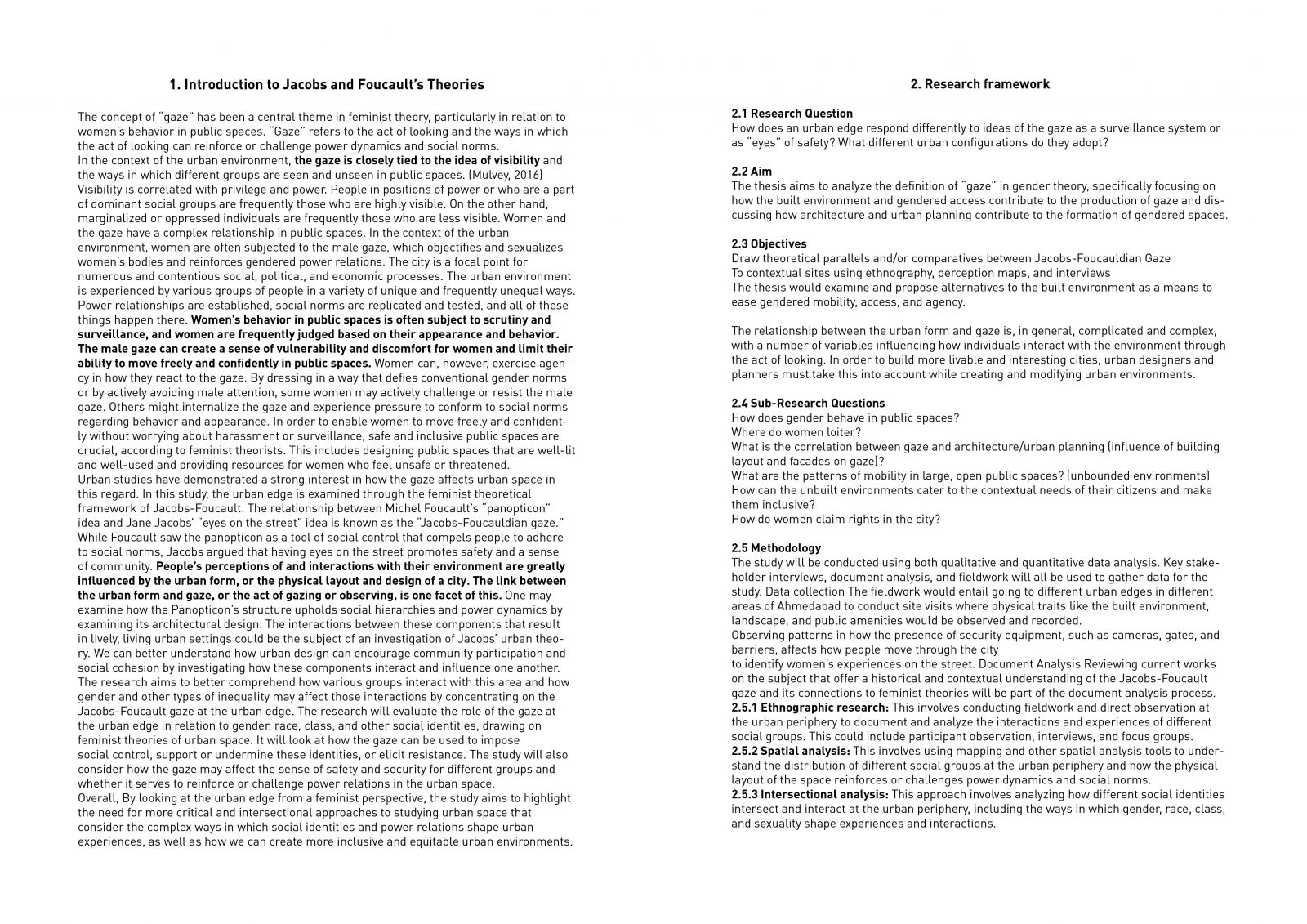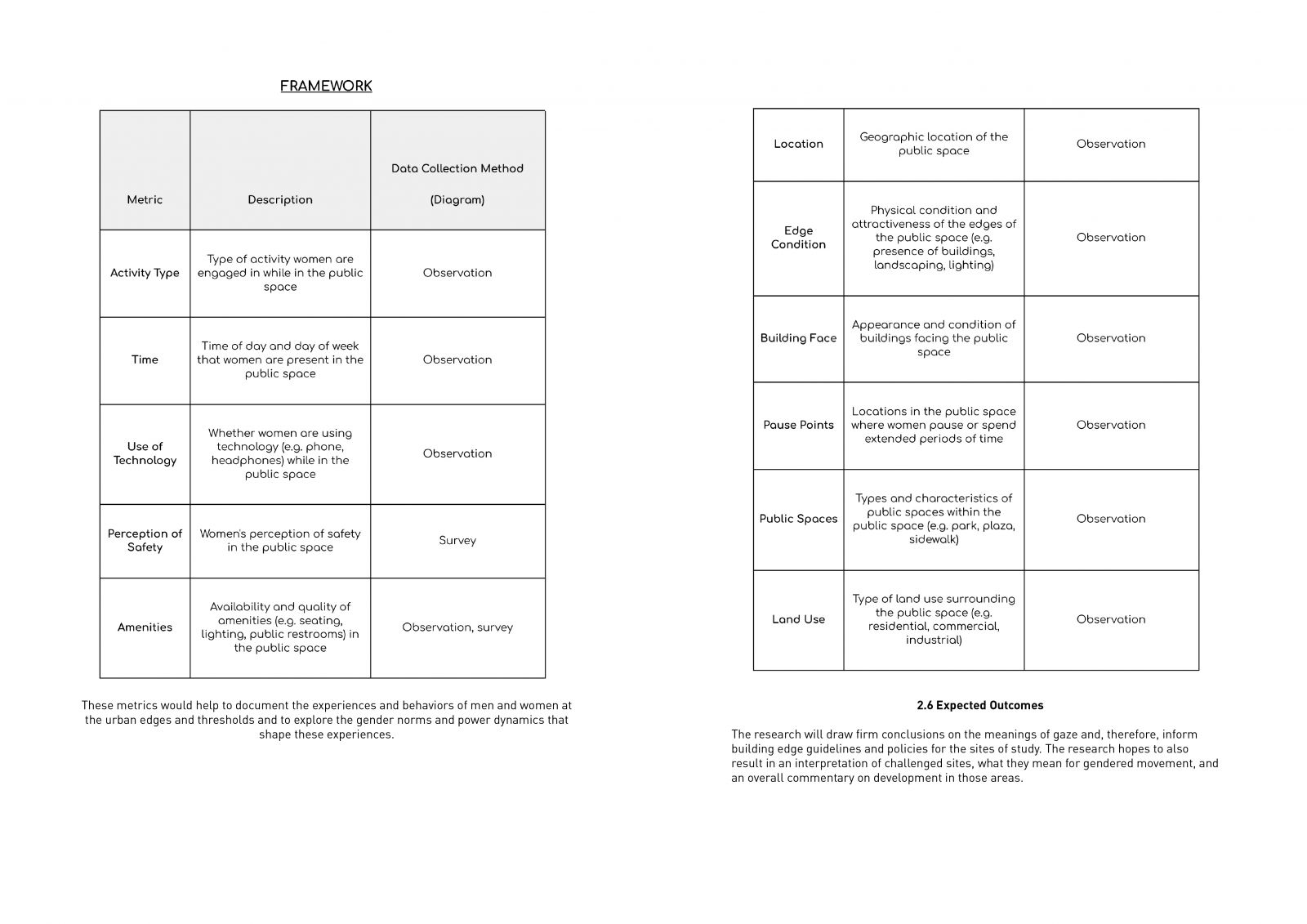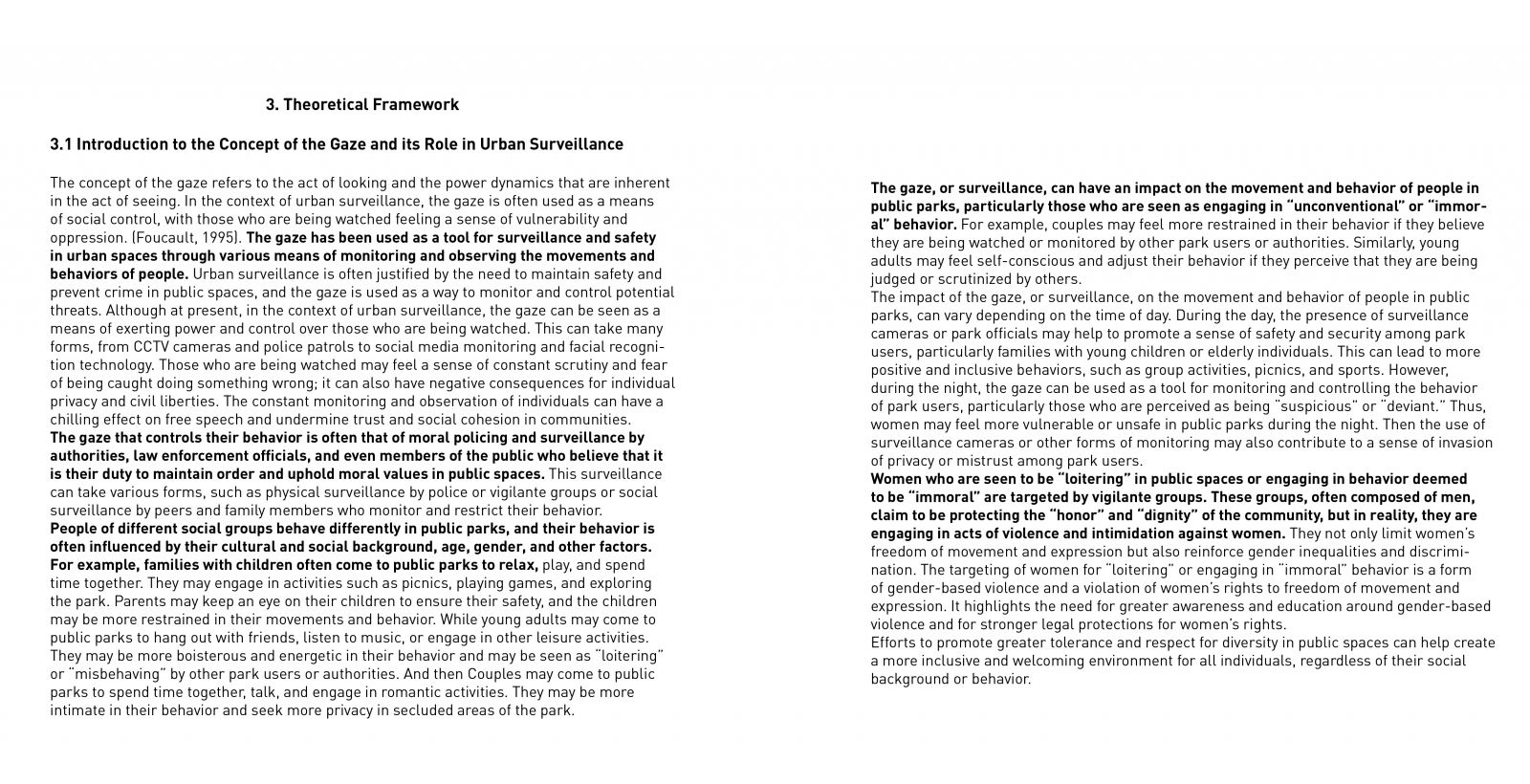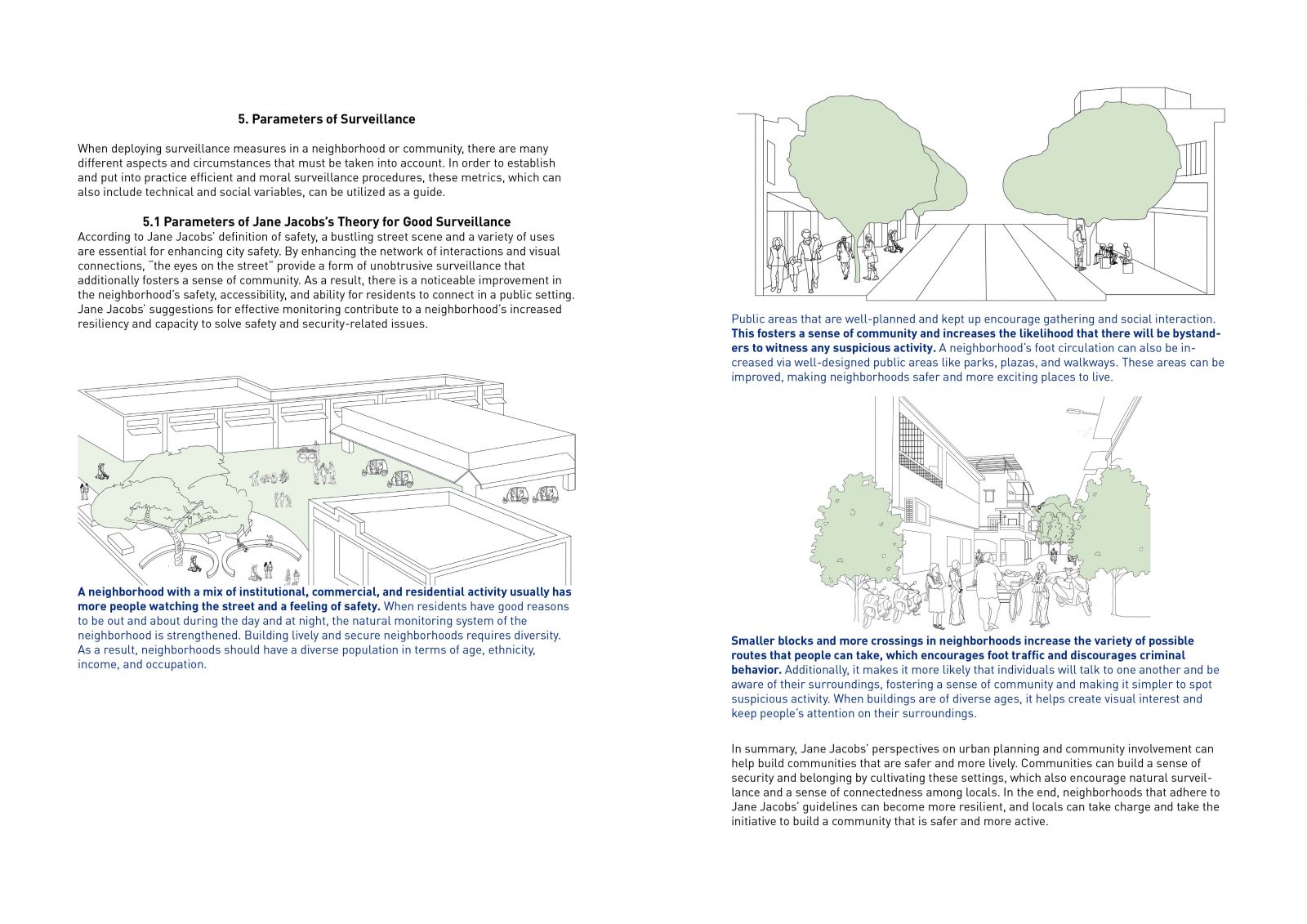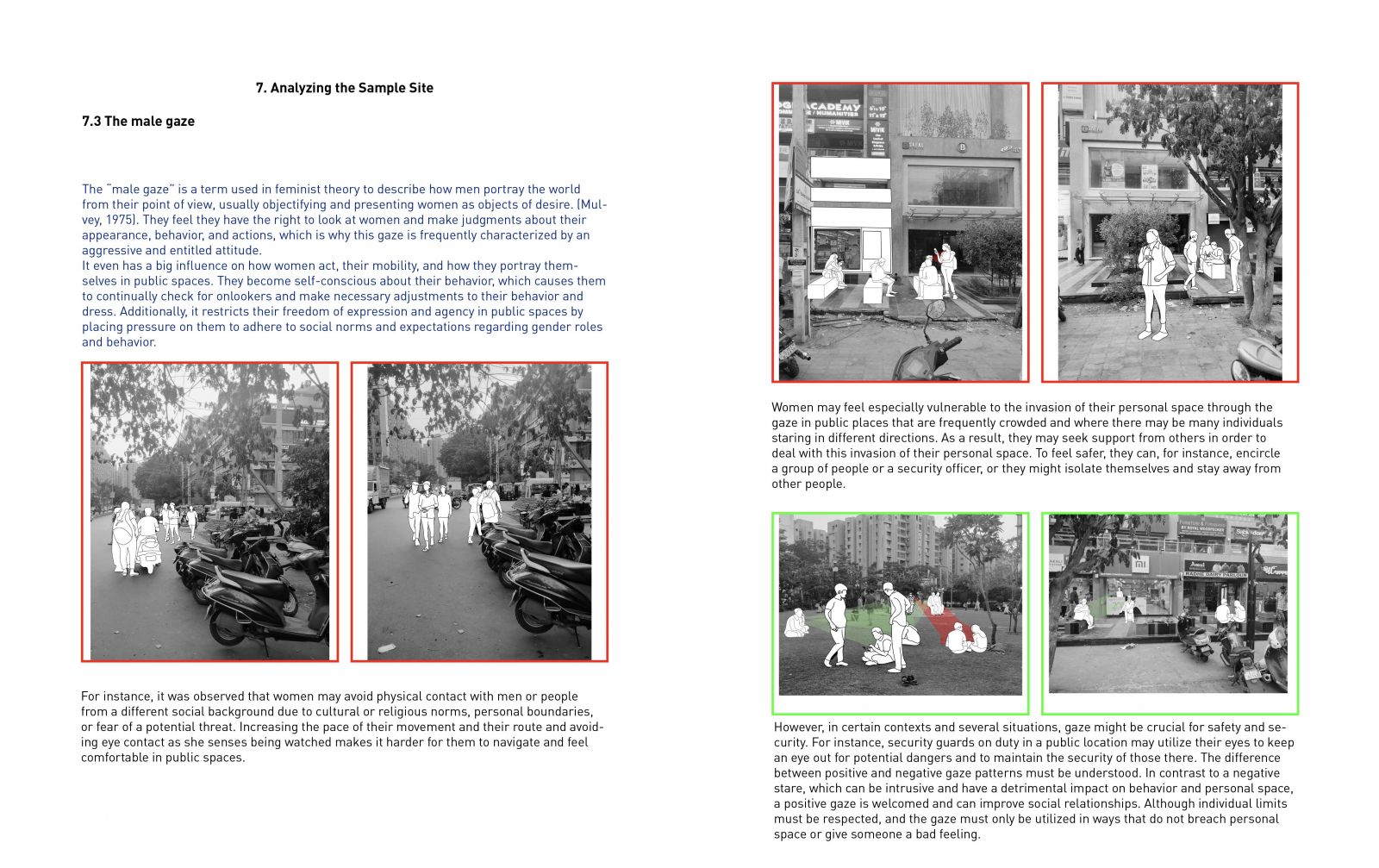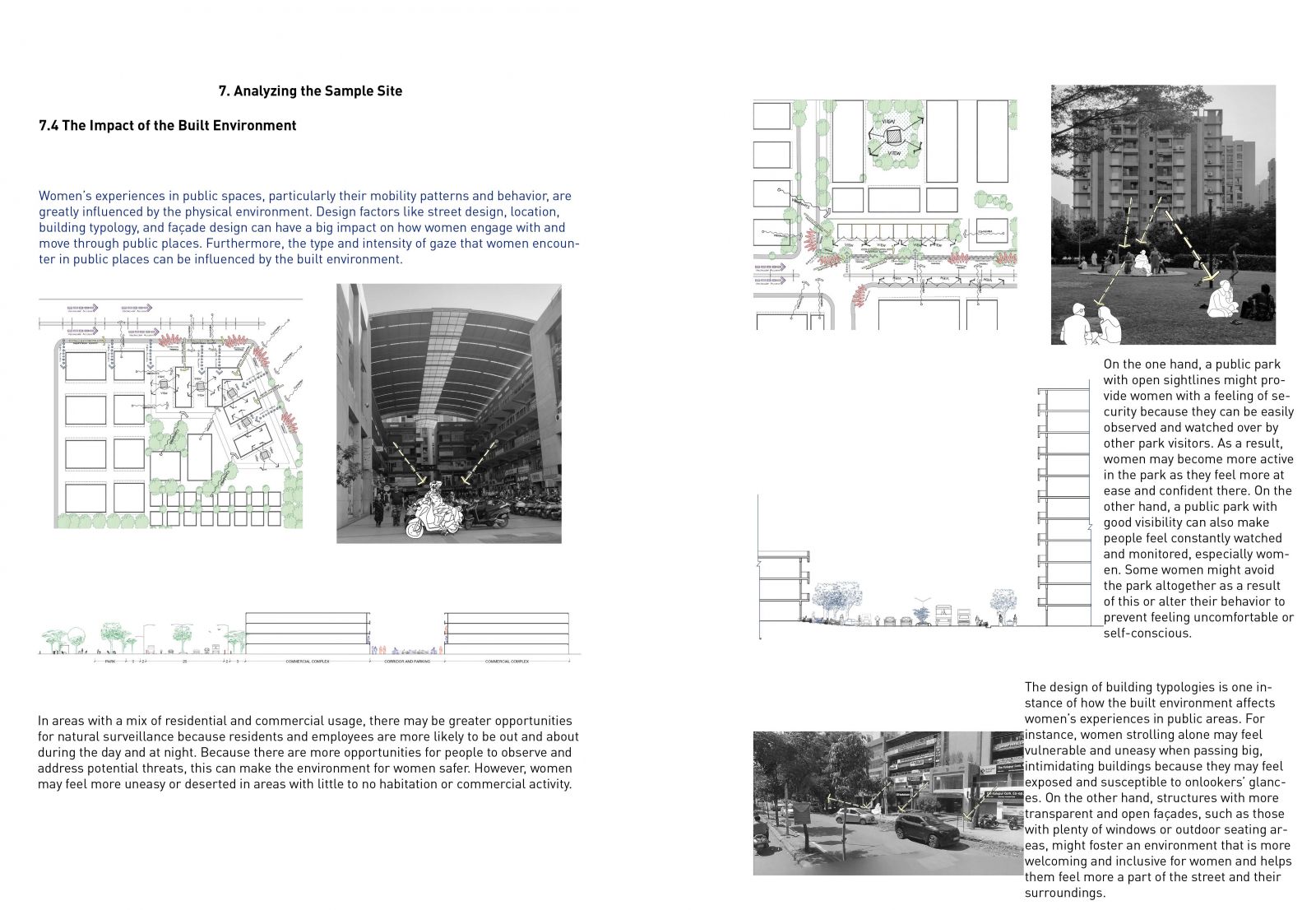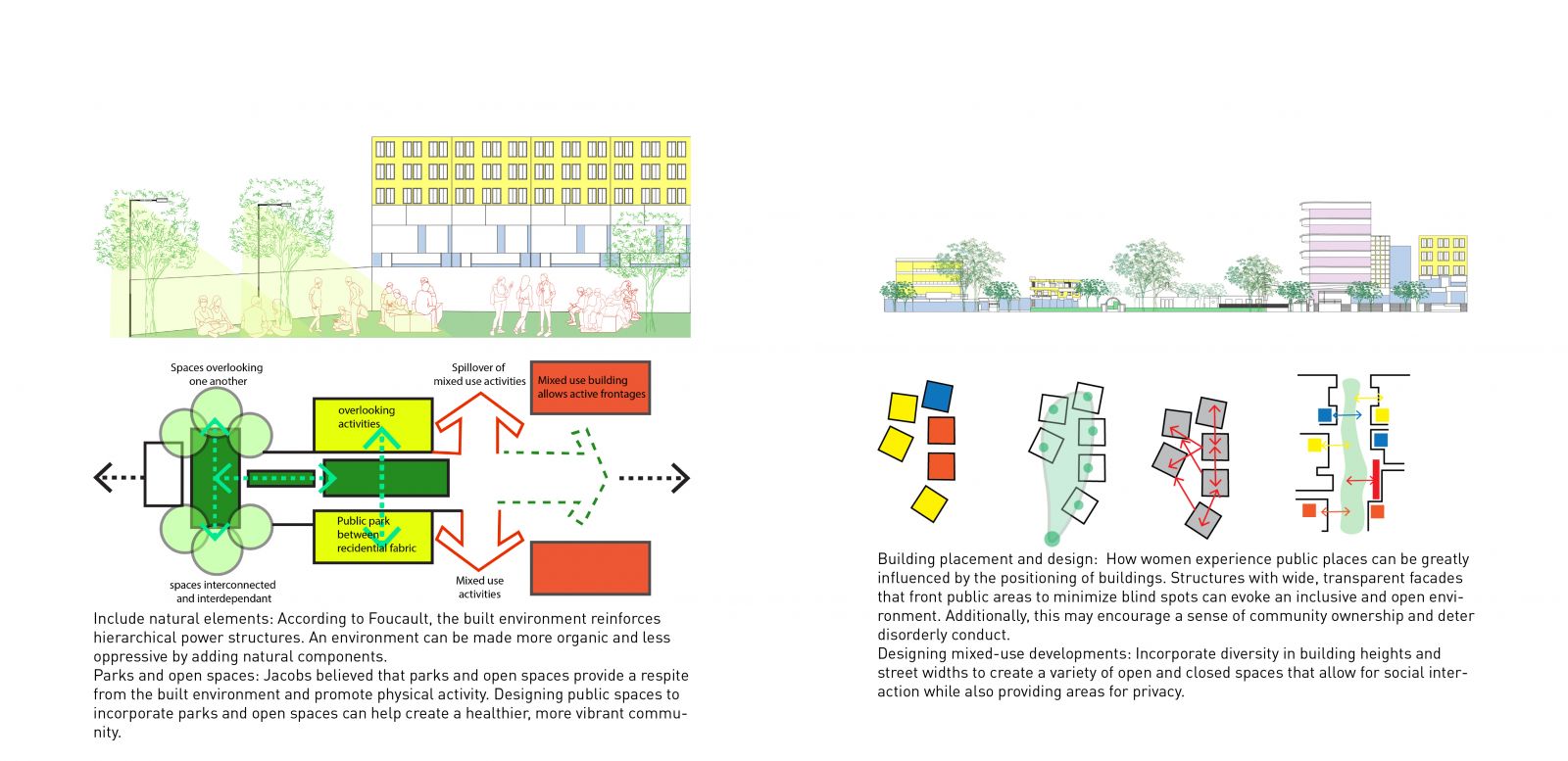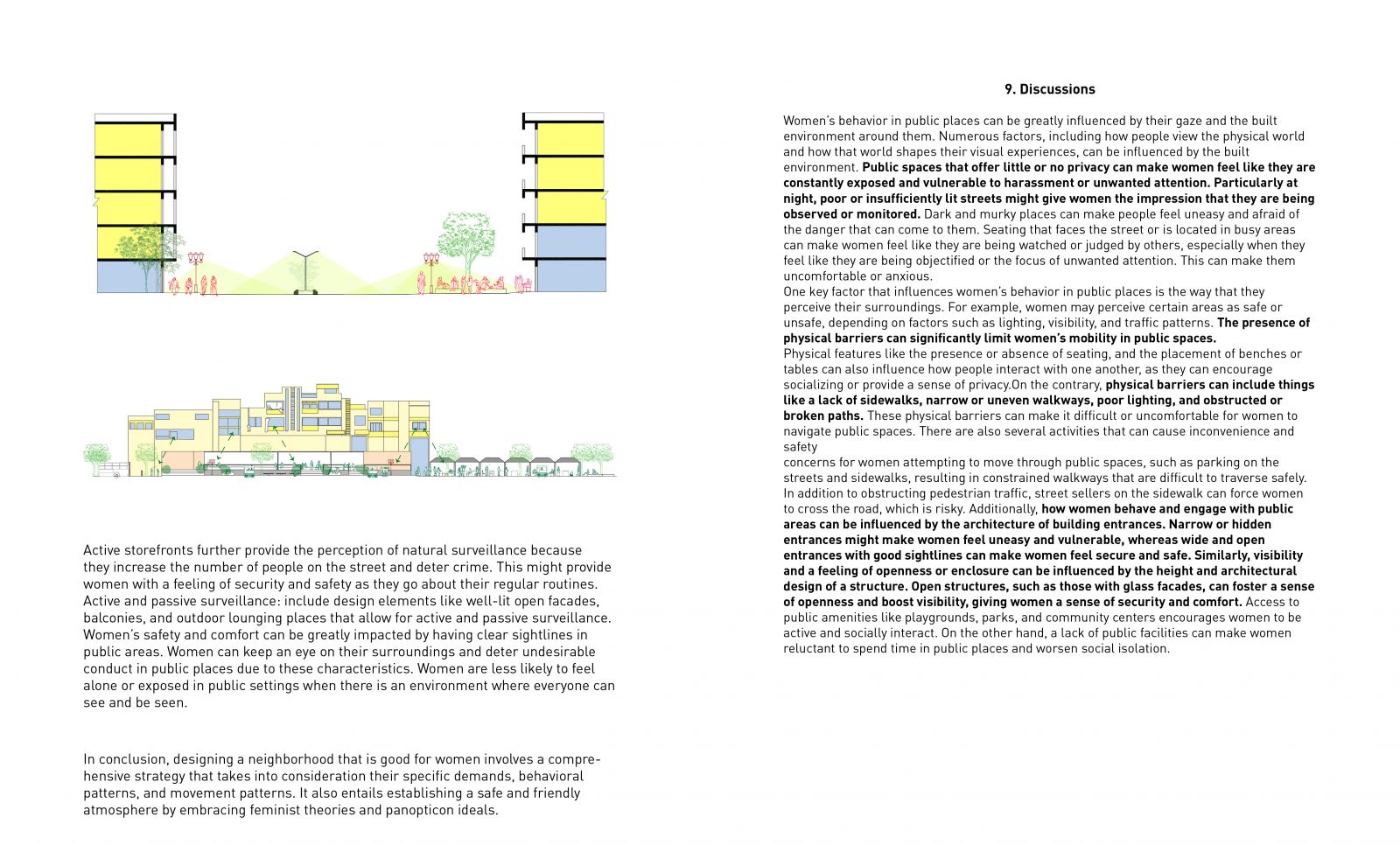Your browser is out-of-date!
For a richer surfing experience on our website, please update your browser. Update my browser now!
For a richer surfing experience on our website, please update your browser. Update my browser now!
The relationship that women have with the city and public areas is intricate and multifaceted. Women have historically been marginalized in many facets of public life and have encountered significant obstacles to full participation in cities. Traditionally, women have been given domestic and caregiving responsibilities that are more often carried out in the private sphere of the home than in the public one. It is a result of the way in which women’s bodies are objectified and sexualized in public settings, as well as gendered power dynamics, that women’s experiences in public settings are influenced. This can make women feel vulnerable and uneasy and restrict their ability to move freely and confidently in public places. The concept of “gaze” is a powerful tool for understanding the ways in which power is manifested and contested in the urban environment. We can see the significance of visibility, social interaction, and surveillance in shaping our understanding of the urban environment by comparing and contrasting Jacobs’ and Foucault’s perspectives on the city. Examining how people look at one another in public places is crucial in the context of feminist theories because it draws attention to the gendered power relations that are ingrained in urban space and the ways in which women negotiate their place within it. The gender urban theory in urban studies looks at how gender affects both the built environment and how we experience it. One of the core concepts is the distinction between the built and unbuilt worlds. The study would assess how various interpretations of “gaze,” including those put forth by urban theorists Jane Jacobs, Henri Lefebvre, and Michel Foucault, “impact the built environment.” It would examine the impact of our gaze on how we comprehend and experience the city. Additionally, it will look at how the relationships of power between various groups and interests impact how gender norms and expectations affect the design, use, and representation of urban spaces.
View Additional Work